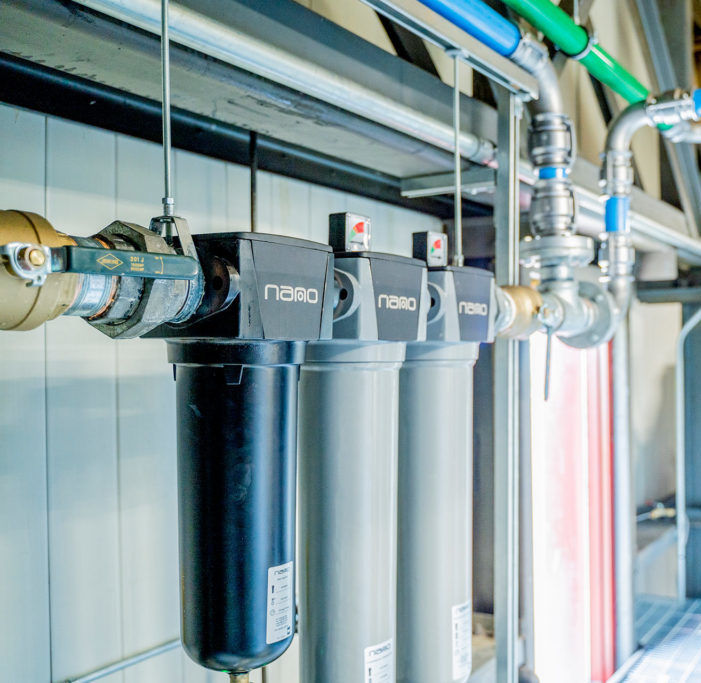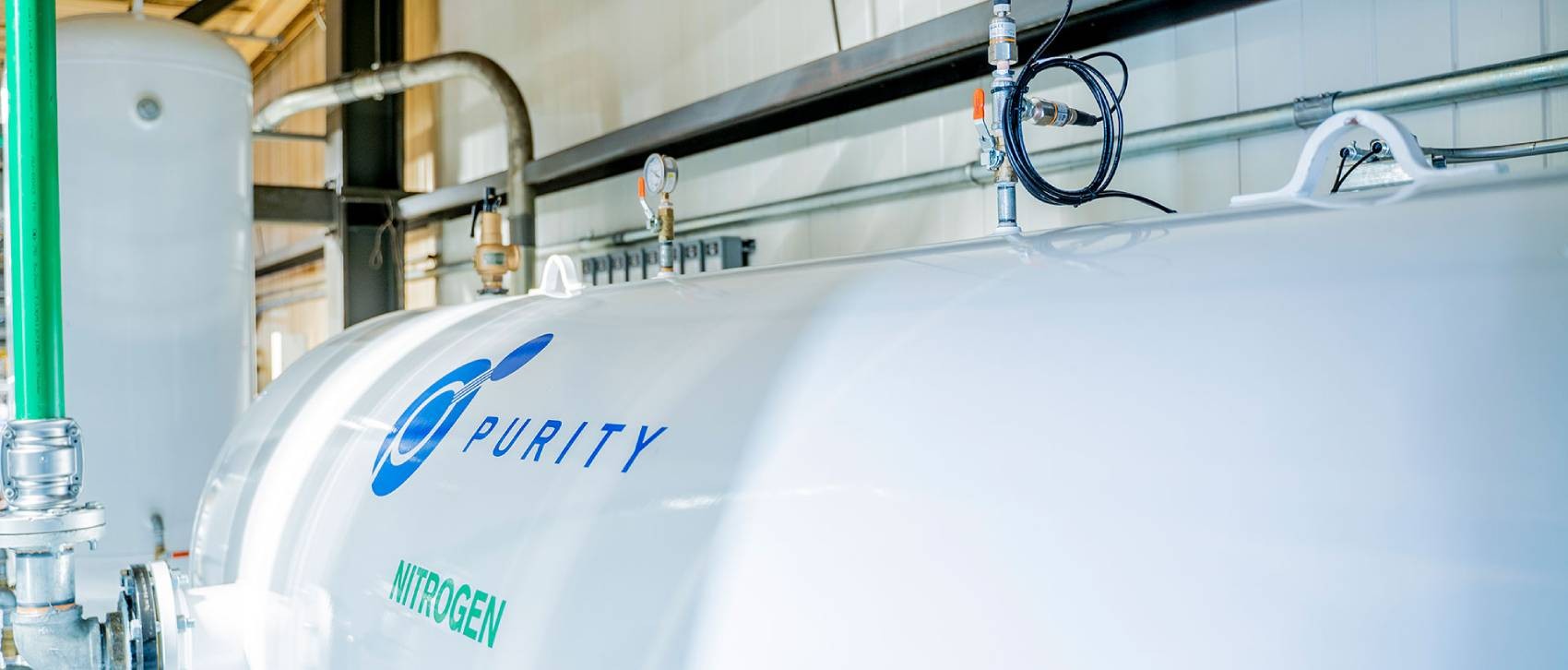The quality of air for any application that uses compressed air is very important. The lifecycle of the Carbon Molecular Sieve or CMS in our nitrogen generators is entirely contingent on clean and dry air. Compressed air contains substances such as dust, oil & water. These substances can be removed by having the appropriate filtration and an air dryer. Optimum air quality in nitrogen generation plays a vital role in maximizing the service life of the system.
Compressed Air Filtration
Adequate filtration removes aerosols and particulates from the compressed air. The particulates are normally removed by activated carbon filters or other particulate filters. Activated carbon filters are made up of extremely porous granular pieces of carbon. The particulates such as dust and other organic compounds react with the activated carbon and stick to the filter via adsorption (learn more about adsorption versus absorption). The activated carbon is created by injecting hot air into carbon which in turn creates many tiny pores. These pores greatly increase the surface area available for particulate adsorption.

Three stage compressed air filtration system
Aerosols on the other hand, get removed with coalescing filters. The definition of “coalesce” is to come together to form one mass or whole. Oil and water aerosols collect on the fibers of the coalescing filter element and coalesce to form droplets which get released from a discharge port or drain. We normally recommend a two or three stage filtration system to ensure good quality air. The filters are also categorized by the size of their pores. We use 1 micron, 0.1 micron & 0.03 mg/m 3 (approximately the same as 0.03 ppm). A micron is one millionth of a meter and is also know as a micrometer (1 µm). To put things in perspective, an average human hair is 40-50 µm, a spider web silk is 2-3 µm and some bacteria are 1 µm. Filters get their rating by undergoing standardized testing to meet the requirements of industry recognized standards such as the ISO 12500 & ISO 8573.
Compressed Air Dryers
The process of compressing air raises the air temperature and therefore concentrates contaminants such as water vapour. Air dryers are rated by their inlet flow rates and pressure dew points. The pressure dew point is the temperature at which vapour condenses into a liquid form at a given pressure. Water in compressed air can cause damage to tools and other processes. To remove the water vapour, there are two types of air dryers which are commonly used.

Refrigeration Air Dryers
Refrigeration air dryers are used to achieve a pressure dew point of 35-40°F or 3°C @ 100 psig. These dryers use a refrigerant gas which is pressurized and then cooled. The cooled refrigerant passes through a heat exchanger which comes in contact with the warmer compressed air. This causes the cooling of compressed air which reduces its ability to absorb water. The cooled air goes through a moisture separator which separates the water from the dried air.
Desiccant Air Dryers
Some processes are very sensitive to the presence of water and should therefore use a desiccant air dryer. Desiccant air dryers typically treat compressed air to a pressure dew point of -40°F/°C @ 100 psig. These dryers use a twin tower system which is very similar to a pressing swing adsorption nitrogen generator. The desiccant dryer is made of two towers which are identical in function and undergo either a drying or regeneration cycle.
Moisture laden compressed air flows into the tower which is in the drying cycle and comes in contact with the porous desiccant media where moisture gets adsorbed, producing very dry air. The second tower which is undergoing the regeneration cycle and is unpressurized, gets 10-15% of the dry air from the drying tower via a reversing valve. The dry air expands to atmospheric pressure and pulls the water off the porous desiccant. The water is discharged from the system and the tower switches cycling from drying to regeneration. Some desiccant dryers are heated to help with the regeneration cycle because they can reduce the amount of air required for regeneration by 50%. This comes at a cost; the heaters generally require a lot of energy so calculations have to be done to determine the optimal solution.
Learn More about Equipment Selection and Air Quality in Nitrogen Generation
Each nitrogen system we design has been assembled with a focus around good air quality at the inlet of the nitrogen generator. Ensuring that the compressed air is appropriately treated before it enters the nitrogen generator can substantially reduce the operating costs of a system and maximize its service life.
Please contact us for more information on our nitrogen generation systems and compressed air treatment options.
 by Dalvir Jandu, P.Eng.
by Dalvir Jandu, P.Eng.

